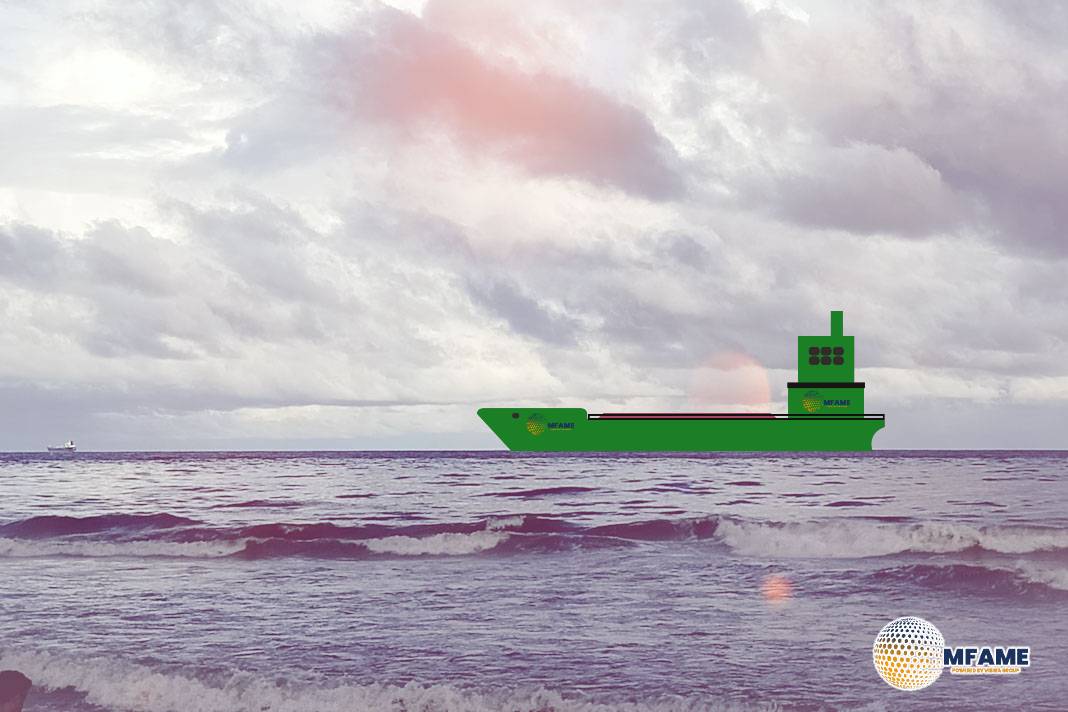- Ordering slump follows record peak of 63.9m Dwt in 2024.
- Newbuilding prices remain high despite weakening demand.
- Capesize leads with 57% of total orders, Supramax at 31%.
In the first seven months of 2025, the activity for ordering dry bulkers took a nosedive, with new orders plummeting by 63% compared to the previous year, totalling just 15.46 million Dwt. This marks a significant turnaround from the record highs seen in 2024, when orders soared to 63.91 million Dwt, the highest in a decade, reports Break Wave Advisors.
High Prices Pressure Ordering Activity
This decline can be attributed in part to the persistently high prices, especially as many bulker markets continue to struggle. The China Newbuilding Dry Bulk Price Index (CNDPI) hit its highest average on record during the first seven months of 2025. While prices usually lag behind order volumes, they have begun to ease, currently sitting 3.3% lower than the peak of 1,167 points reached in September–October 2024. With shipbuilding activity at unprecedented levels, we can expect prices to adjust downward even further.
Order Breakdown by Segment
When looking at deadweight tonnage, Capesize vessels took the lead with 8.85 million Dwt, making up 57% of the total, followed by Supramax at 4.90 million Dwt, which accounted for 31%. Panamax and Handysize together only represented 417,000 Dwt, or 3%. In terms of the number of vessels, 165 ships were ordered in the first seven months of 2025, a far cry from the ten-year average of 485 vessels. Supramax made up 55% of the total, while Capesize accounted for 23%, and Panamax and Handysize combined only made up 11%.
China’s Continued Dominance Despite Declines
China continues to be the leading source of orders, although overall orders from Chinese owners dropped by 48.6% year-on-year, reflecting last year’s remarkable surge rather than the recent proposals from USTR. Interestingly, orders for Capesize vessels from China increased by 36.4%, with 30 units contracted under COSCO’s “National Cargo, National Fleet” strategy.
COSCO, for example, ordered 10 Capesizes in July at Qingdao Beihai Shipyard and COSCO Shipping Zhoushan Shipyard, scheduled for delivery between 4Q27 and 4Q28. Shandong Shipping also placed orders for 10 methanol dual-fuel 320,000 Dwt vessels in June.
Collapse in Greek Ordering Activity
Greek shipowners, who have long been seen as a key indicator for bulk ordering, have significantly cut back on their activity, dropping from second place last year to fifth in 2025. This year, only one Kamsarmax and two Handymax orders were made. Both China and Greece experienced sharp declines in Panamax and Supramax orders.
Concerns Over Oversupply in Panamax and Supramax
The order books for Panamax and Supramax vessels are already at 22% and 25% of the current fleet, respectively, marking the highest levels across all bulker segments. With average fleet ages of 13.5 years for Panamax and 11.8 years for Supramax, these ships still have plenty of life left in them. The combination of high orderbook levels and younger fleets is making newbuilding demand less appealing.
What’s Behind the Drop in Orders?
- High Newbuilding Prices Compared to Earnings: In 2024, Capesize newbuilding prices jumped by 11.4%, and even Handysize prices saw a 4% increase. Strong freight markets have driven asset values up. Additionally, yard capacity constraints, due to a surge in tanker and LNG orders, have pushed dry bulk slot prices higher as shipyards focus on more lucrative vessels.
- Regulatory and Technological Uncertainty: The IMO has laid out its decarbonization roadmap, but there’s still a lot of uncertainty regarding fuels and costs. The rollout of dual-fuel engines and green fuels is slow and costly, which is putting a damper on new orders.
- Geopolitical and Trade Policy Shocks: Proposed USTR fees on ships built or owned by China have created some hesitation, particularly in the Supramax, Panamax, Ultramax, and Kamsarmax segments. Chinese leasing firms are now shifting their focus to LNG carriers and looking into RMB-based financing models to reduce risks.
Taking a Wait-and-See Approach
With a mix of challenges, high prices, regulatory uncertainty, and geopolitical risks, owners are playing it safe. Even though many are sitting on cash reserves, most would rather hold off on placing orders until they have clearer signals from policies and the market.
While newbuilding prices are expected to ease gradually, the sharp contraction in 2025 reflects a broader correction. The combination of environmental rules, energy transition dynamics, and trade tensions will continue to shape ordering behaviour and future fleet fundamentals over the next two to three years.
Did you subscribe to our daily Newsletter?
It’s Free Click here to Subscribe!
Source: Break Wave Advisors

















